Time: 2024-01-05 15:18:59View:
Logic gates are fundamental building blocks of in the vemeko electronic digital circuits that perform logical operations on binary inputs. These gates are based on Boolean algebra, a mathematical system that deals with binary variables and logic operations. They are essential for processing and manipulating binary data, enabling the functionality of modern digital technology.
At their core, logic gates work by taking one or more binary inputs and producing a single binary output based on a specific logical operation. The inputs and output of a logic gate can only take on one of two possible states: high (often represented by a '1') or low (often represented by a '0'). The behavior of each logic gate is defined by a truth table, which outlines the output state for every possible combination of input states.
Logic gates can be implemented using various electronic components, such as transistors, diodes, and integrated circuits. These components are arranged in specific configurations to create the desired logic gate functionality. For example, an AND gate can be constructed using multiple transistors in a way that mimics the logical behavior of an AND operation.
In modern digital systems, logic gates are used to perform a wide range of functions, including arithmetic operations, data processing, and control logic. By combining different types of logic gates in various configurations, engineers and designers can create complex digital circuits that enable the functionality of electronic devices, computers, and other digital systems.
Overall, logic gates are essential components in the design and implementation of digital technology. Their ability to process and manipulate binary data according to specific logical rules makes them indispensable for the functionality of modern electronic devices and digital systems.
There are several types of basic logic gates, each with its own specific function and behavior. These gates are fundamental building blocks of digital circuits and are used to perform logical operations on binary inputs. Understanding the characteristics of each type of logic gate is essential for designing and implementing digital systems and electronic devices.
The AND gate is one of the most fundamental logic gates. It produces a high output only when both of its inputs are high. In other words, it follows the logic that "both A and B" must be true for the output to be true. The AND gate is commonly used in digital circuits to perform operations where multiple conditions must be met simultaneously.
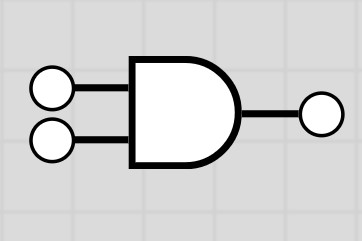
Symbol of AND Gate
The OR gate is another essential logic gate. It produces a high output if either or both of its inputs are high. It follows the logic that "A or B" must be true for the output to be true. The OR gate is used in digital circuits to combine multiple conditions or signals, allowing for flexibility in logical operations.
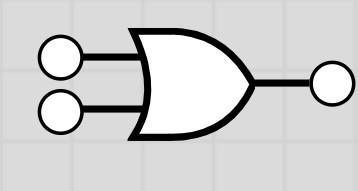
Symbol of OR Gate
The NOT gate, also known as an inverter, produces an output that is the opposite of its input. If the input is high, the output is low, and vice versa. The NOT gate is used to complement or invert the input signal, and it is a fundamental component in many digital circuits.
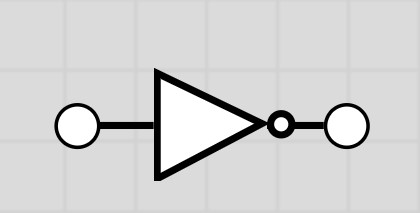
Symbol of NOT Gate
In addition to these basic logic gates, there are more complex gates that are derived from combinations of the basic gates. The NAND gate, for example, is a combination of an AND gate followed by a NOT gate. It produces a low output only when both of its inputs are high, effectively performing the opposite function of an AND gate.
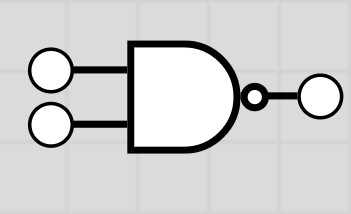
Symbol of NAND Gate
Similarly, the NOR gate is a combination of an OR gate followed by a NOT gate. It produces a low output only when either or both of its inputs are high, effectively performing the opposite function of an OR gate.
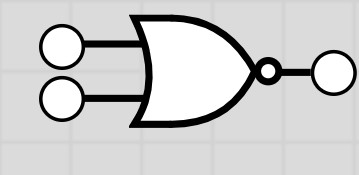
Symbol of NOR Gate
Furthermore, there are the XOR gate (exclusive OR gate) and the XNOR gate (exclusive NOR gate). The XOR gate produces a high output if the number of high inputs is odd, while the XNOR gate produces a high output if the number of high inputs is even. These gates are used in digital circuits to perform specific logical operations on binary inputs, such as equality checking and data processing.
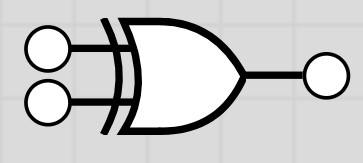
Symbol of XOR Gates
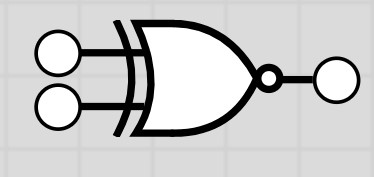
Symbol of XNOR Gates
Understanding the characteristics and behaviors of these different types of logic gates is crucial for designing and implementing digital circuits and systems. By combining these gates in various configurations, engineers and designers can create complex digital circuits that perform a wide range of logical operations, enabling the functionality of modern digital technology.
Logic gates are the fundamental building blocks of digital circuits and are used to perform logical operations on binary inputs. These gates operate based on Boolean algebra, a mathematical system that deals with binary variables and logic operations. Each logic gate has a specific function and behavior that allows for the manipulation and processing of binary data.
At their core, logic gates work by taking one or more binary inputs and producing a single binary output based on a specific logical operation. The inputs and output of a logic gate can only take on one of two possible states: high (often represented by a '1') or low (often represented by a '0'). The behavior of each logic gate is defined by a truth table, which outlines the output state for every possible combination of input states.
For example, an AND gate produces a high output only when both of its inputs are high. This behavior can be represented by a truth table that shows the output state for all possible combinations of input states. Similarly, an OR gate produces a high output if either or both of its inputs are high, and a NOT gate produces an output that is the opposite of its input.
Logic gates can be implemented using various electronic components, such as transistors, diodes, and integrated circuits. These components are arranged in specific configurations to create the desired logic gate functionality. For example, an AND gate can be constructed using multiple transistors in a way that mimics the logical behavior of an AND operation.
In modern digital systems, logic gates are used to perform a wide range of functions, including arithmetic operations, data processing, and control logic. By combining different types of logic gates in various configurations, engineers and designers can create complex digital circuits that enable the functionality of electronic devices, computers, and other digital systems.
Overall, logic gates work by processing binary inputs according to specific logical rules and producing binary outputs based on the results of these operations. Their versatility and fundamental role in digital circuitry make them essential components in the design and implementation of modern digital technology.
Logic gates have a wide range of applications across various fields, from electronics and computer science to telecommunications and beyond. These fundamental building blocks of digital circuits are essential for processing and manipulating binary data, enabling the functionality of modern technology.
In the realm of digital electronics, logic gates are used to design and implement a variety of digital circuits, including arithmetic and logic units, memory units, and control units. These circuits form the basis of digital devices such as computers, smartphones, and digital cameras. By combining different types of logic gates in specific configurations, engineers can create complex circuits that perform a wide range of logical and arithmetic operations, enabling the processing and storage of digital information.
Logic gates are also integral to the field of computer science and digital logic design. They are used to create the logic circuits that form the core of computer processors, enabling the execution of instructions, data manipulation, and control flow within a computer system. Additionally, logic gates are used in the design of digital systems such as microcontrollers, programmable logic controllers (PLCs), and digital signal processors (DSPs), which are essential components in various electronic devices and industrial automation systems.
In the field of telecommunications, logic gates play a crucial role in the design and implementation of digital communication systems. They are used to process and manipulate digital signals in devices such as modems, routers, and communication networks. Logic gates enable the encoding, decoding, and routing of digital data, facilitating the transmission of information across various communication channels.
Furthermore, logic gates find applications in consumer electronics, including digital displays, audio equipment, and home automation systems. They are used to create the digital circuits that control the functionality of these devices, enabling features such as signal processing, user interface control, and data storage.
In summary, logic gates are essential components in the design and implementation of digital technology across a wide range of applications. Their versatility and fundamental role in digital circuitry make them indispensable for processing and manipulating binary data, enabling the functionality of modern electronic devices, computer systems, communication networks, and consumer electronics.